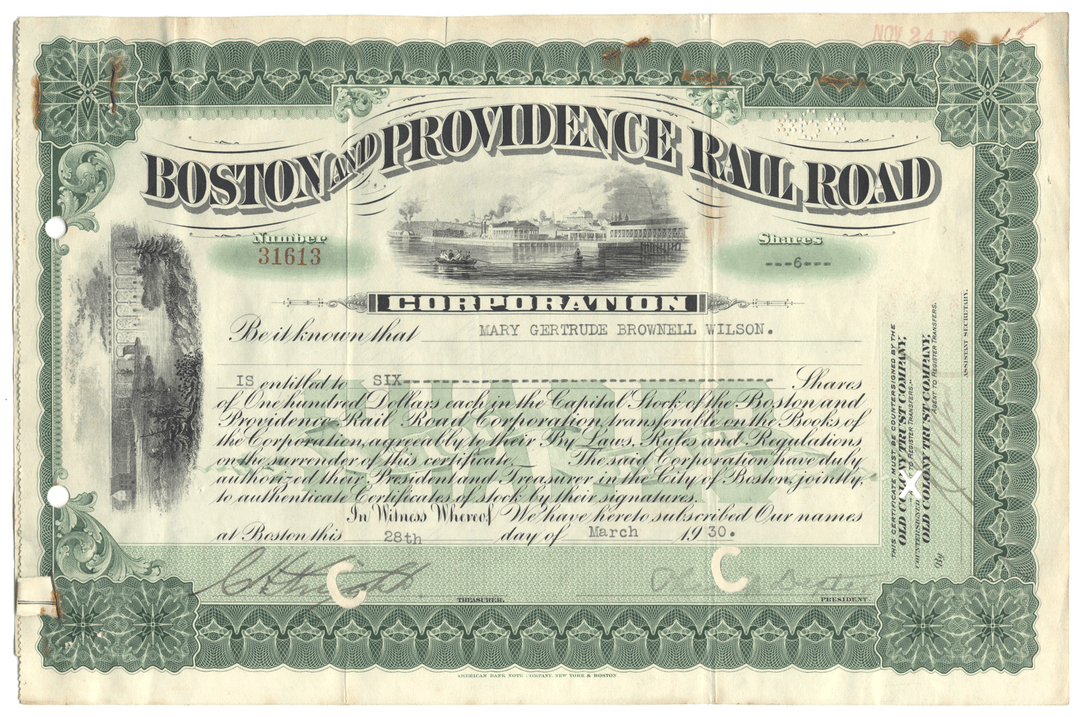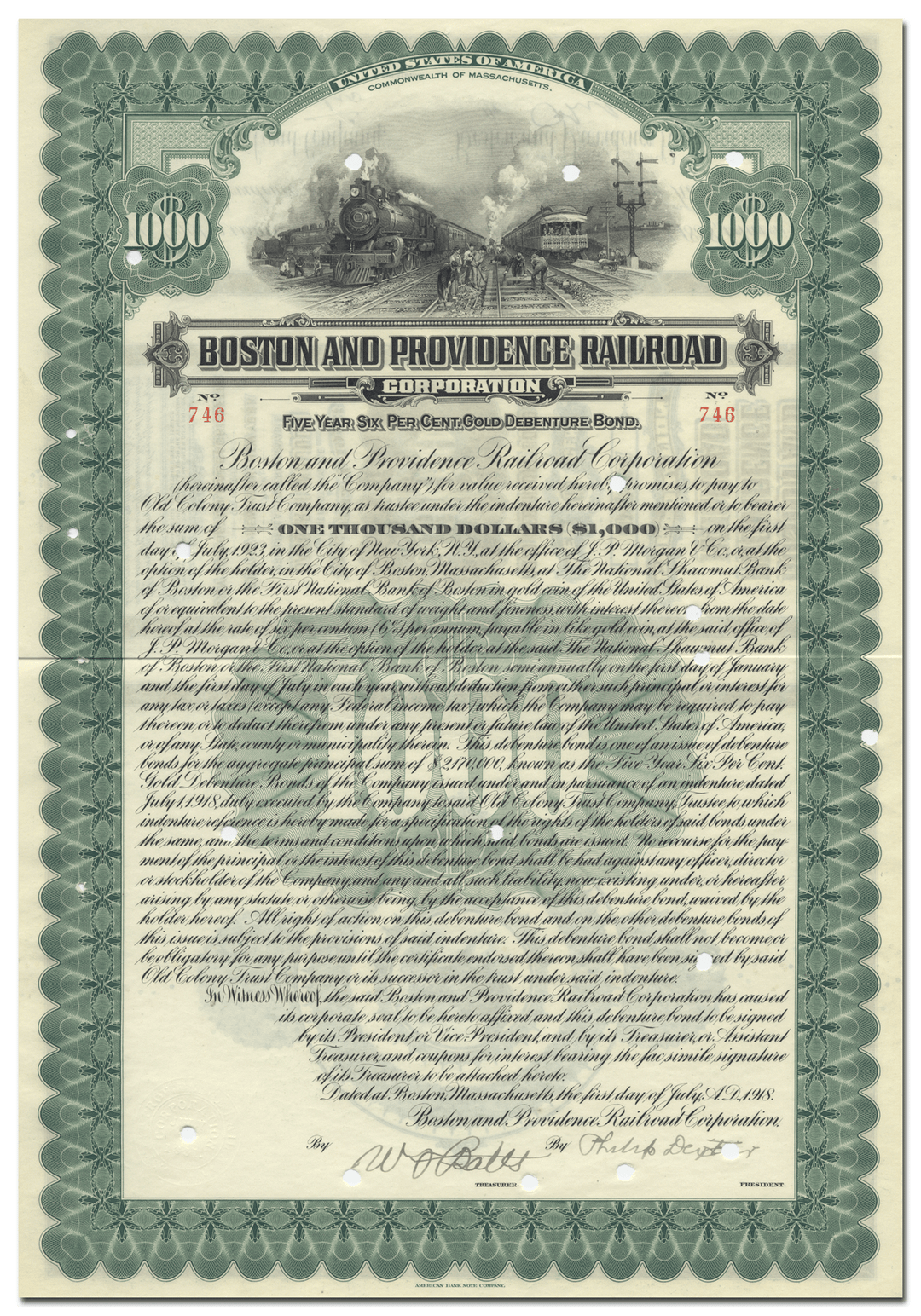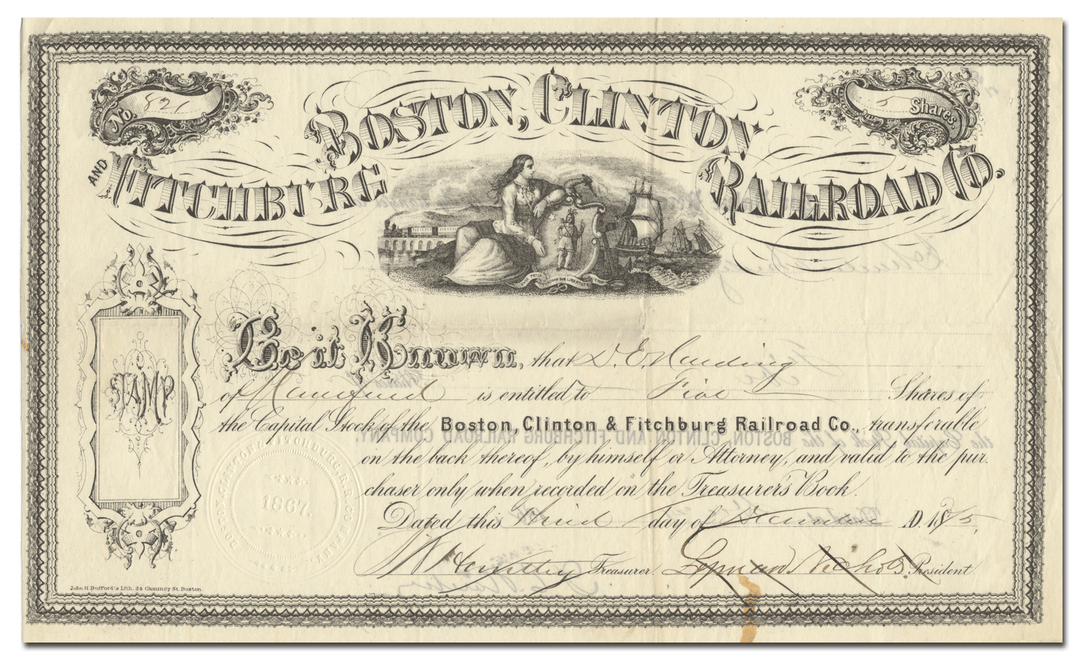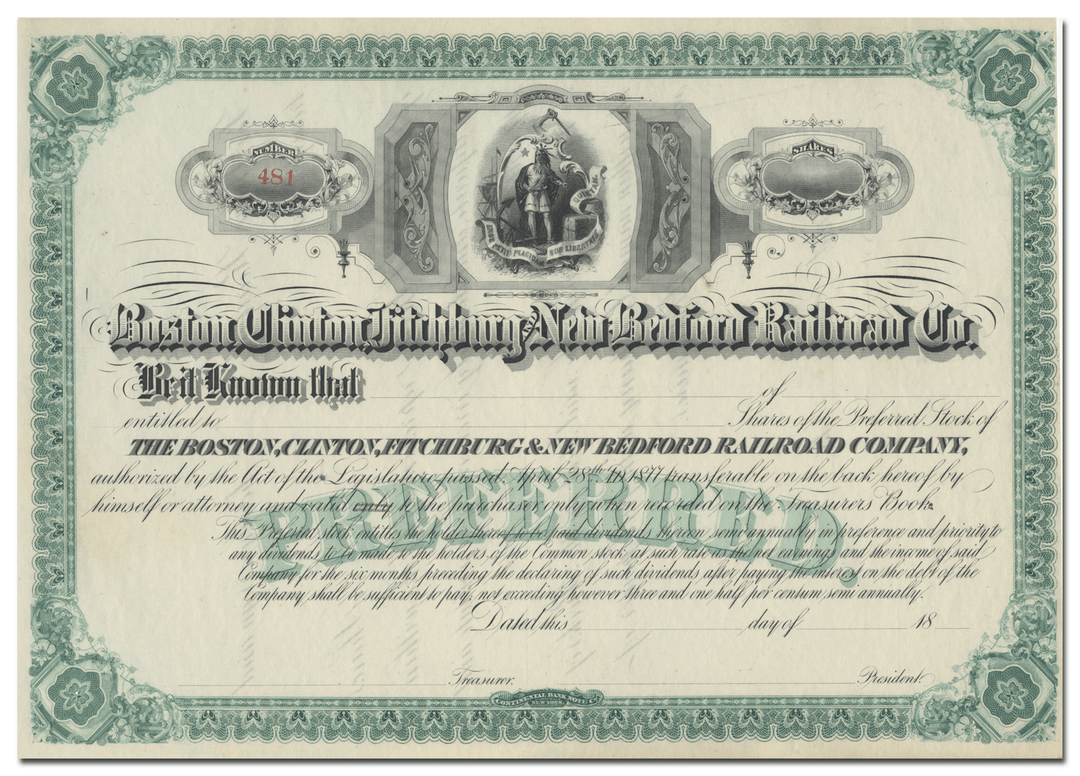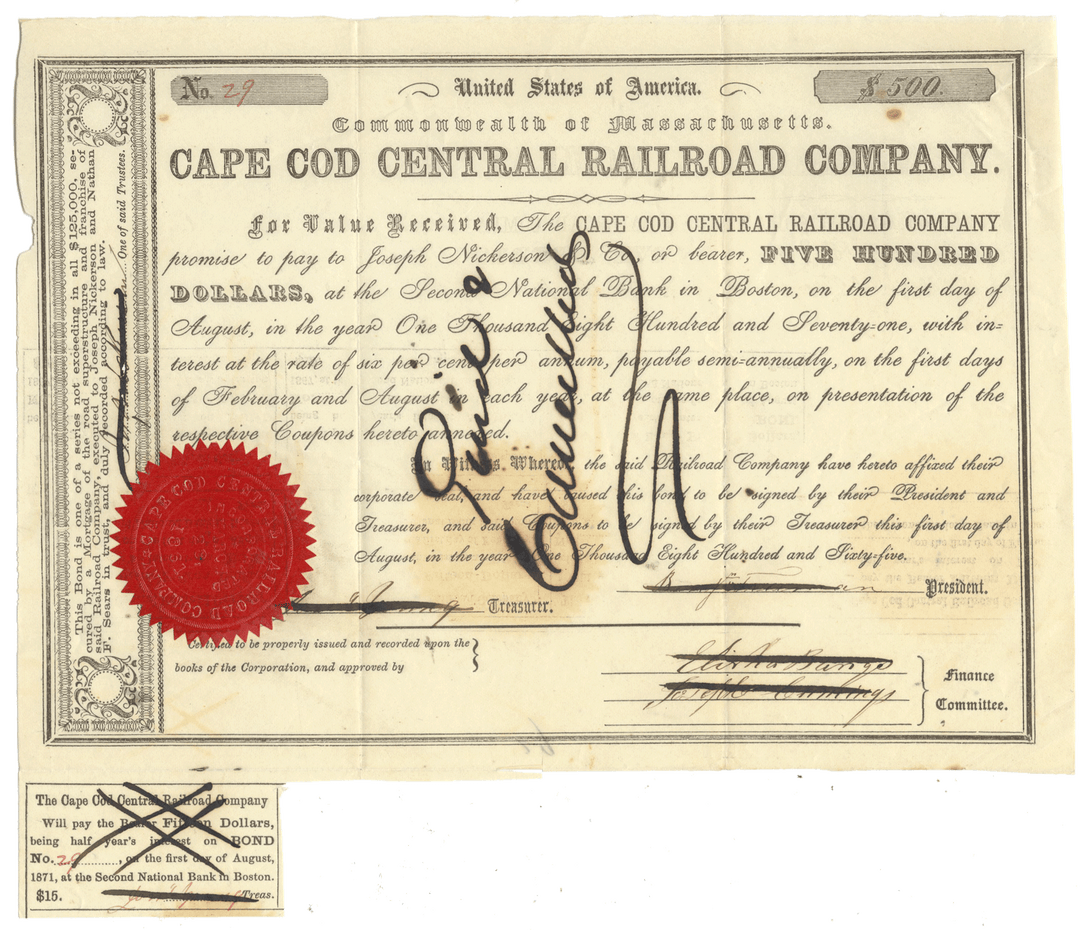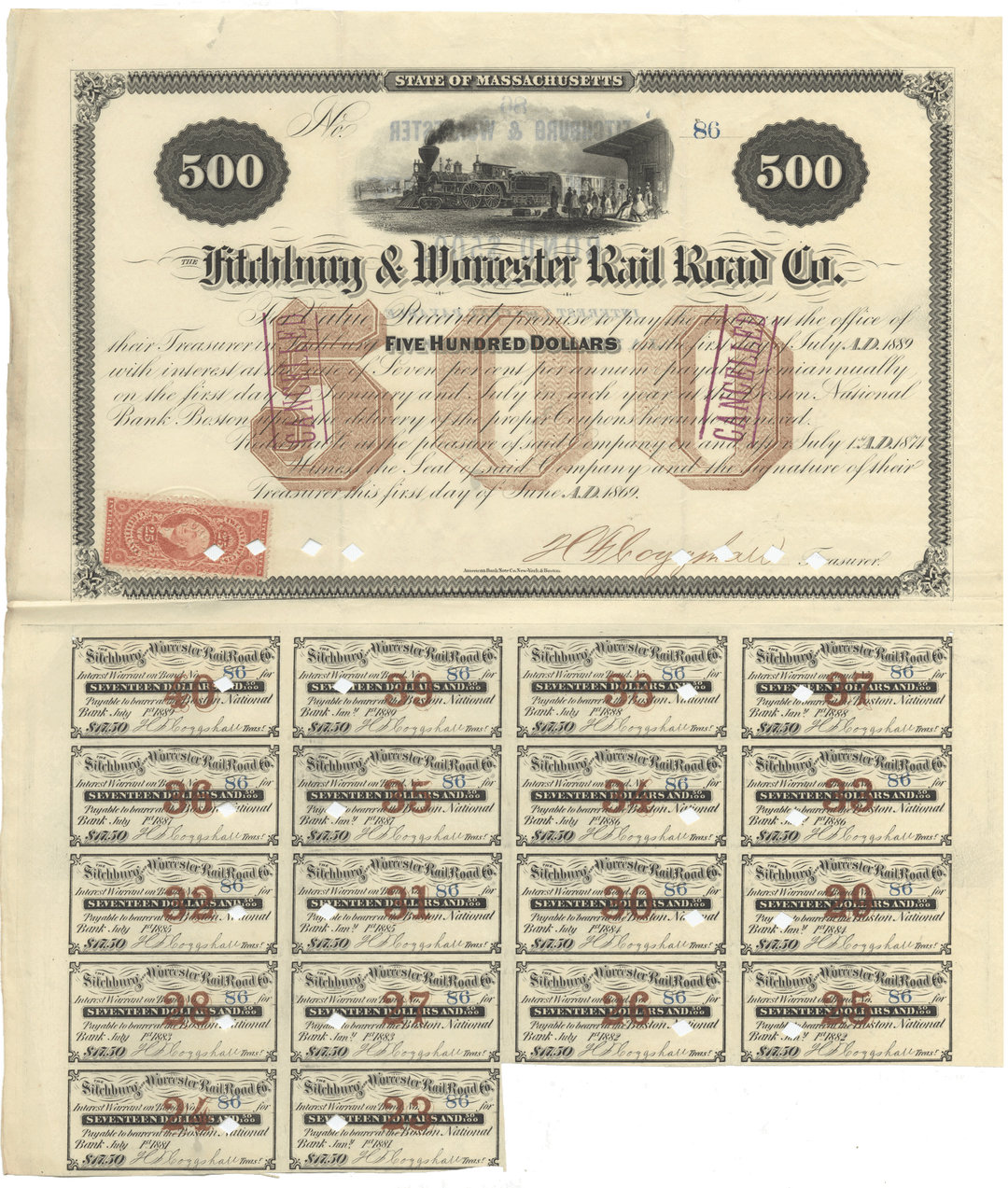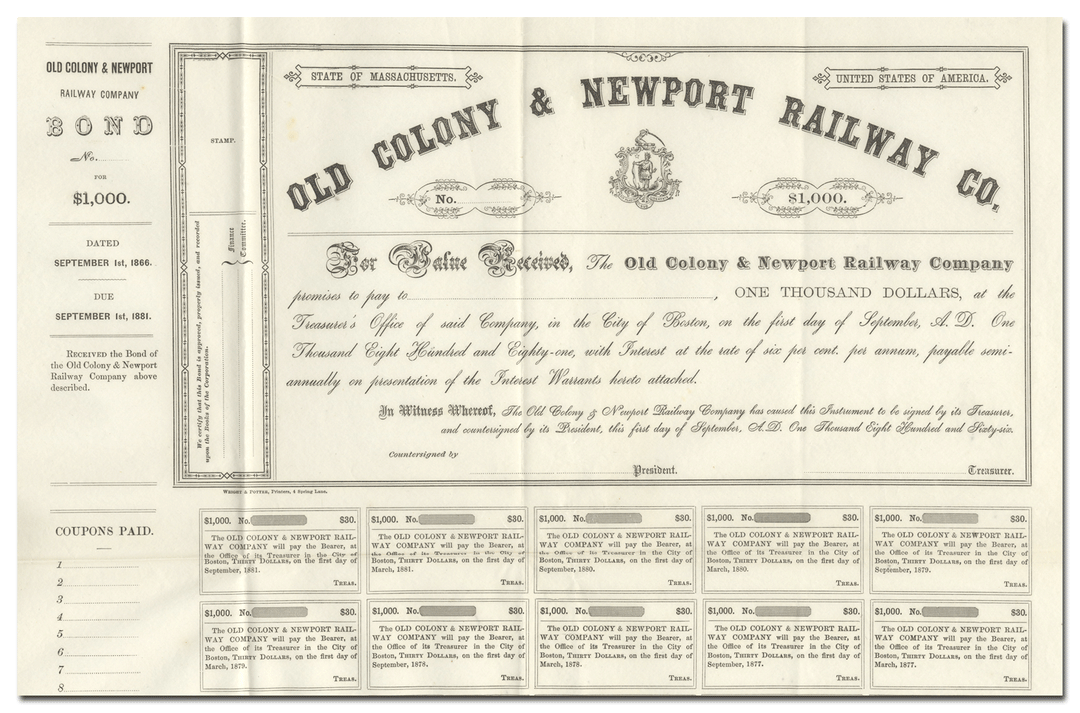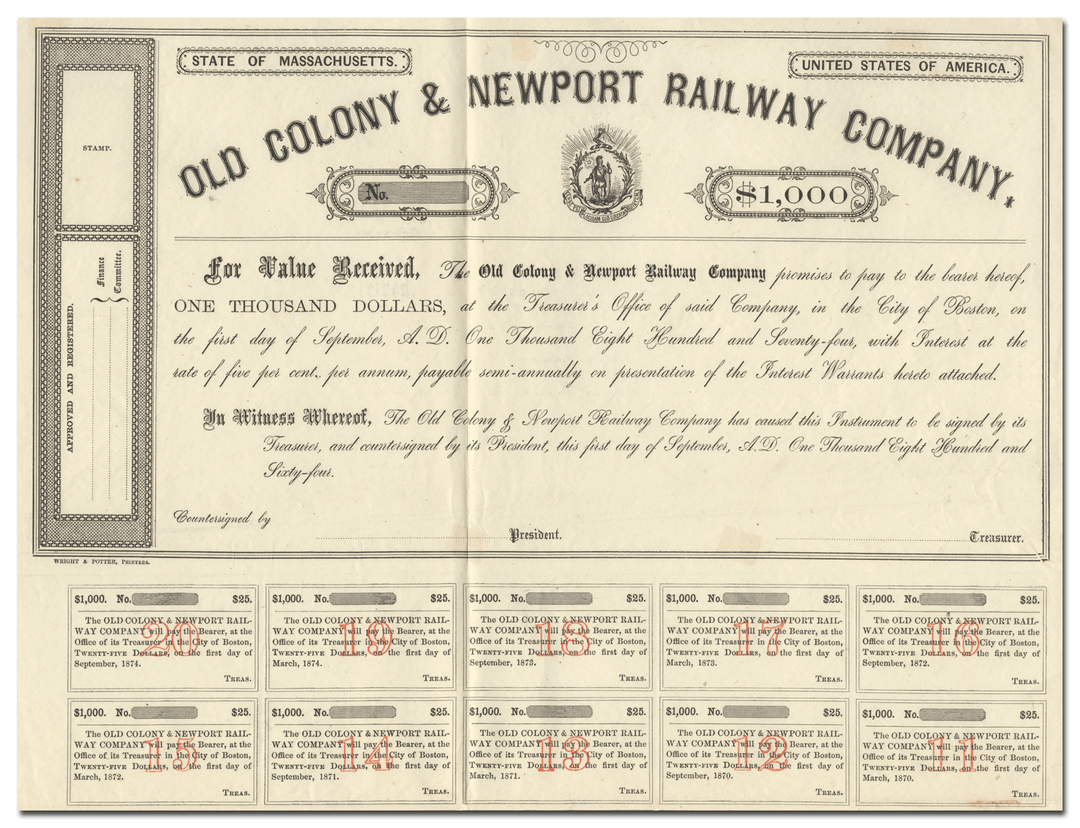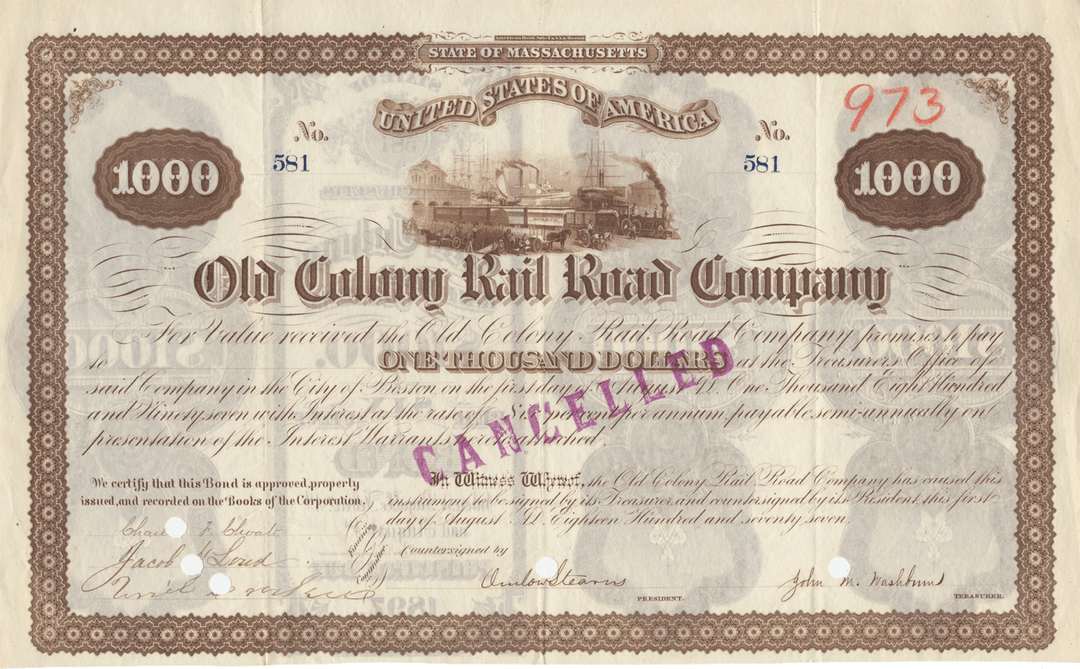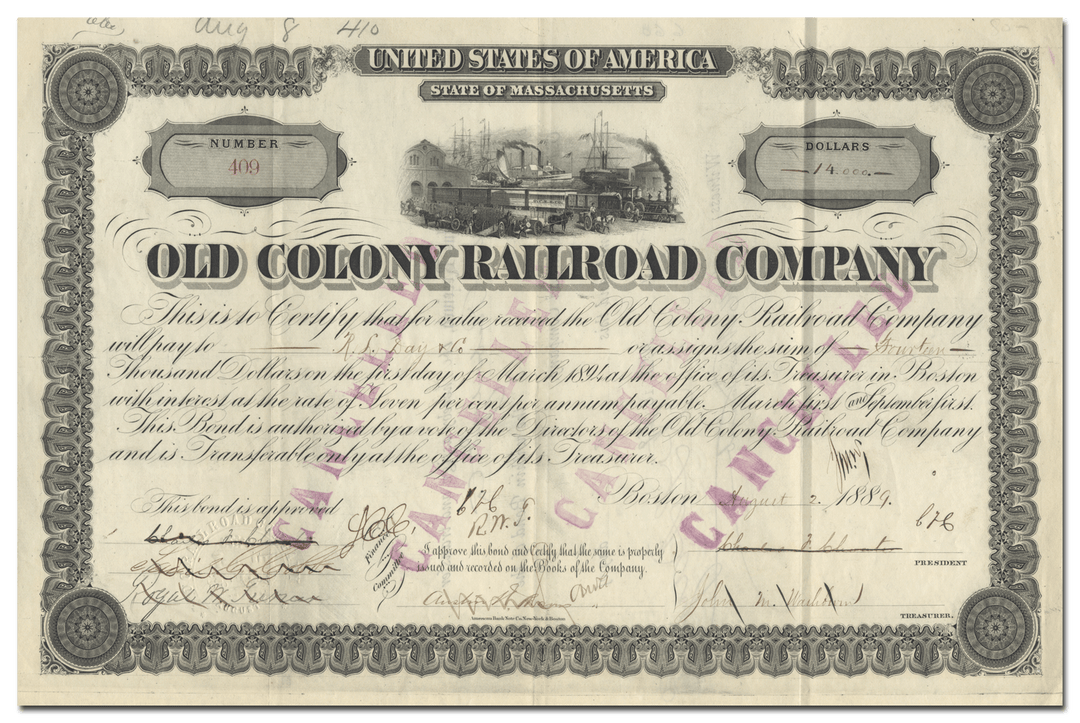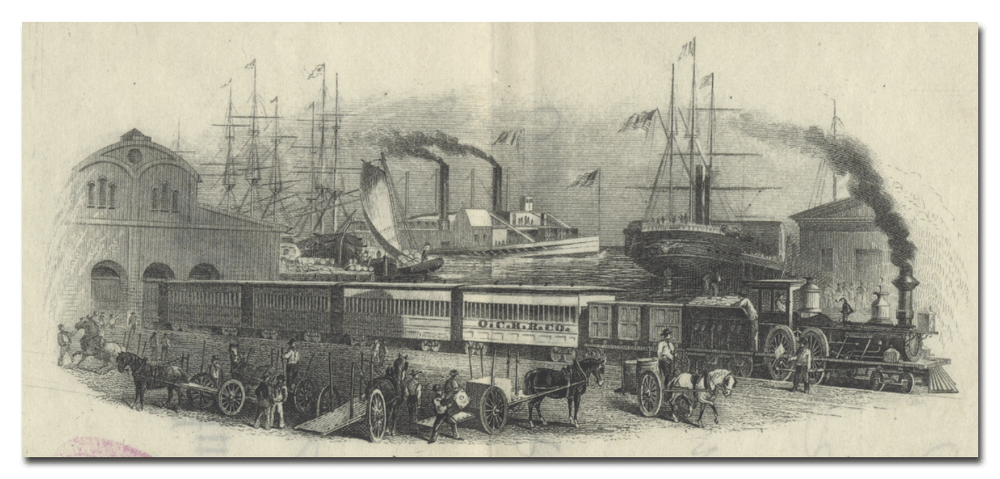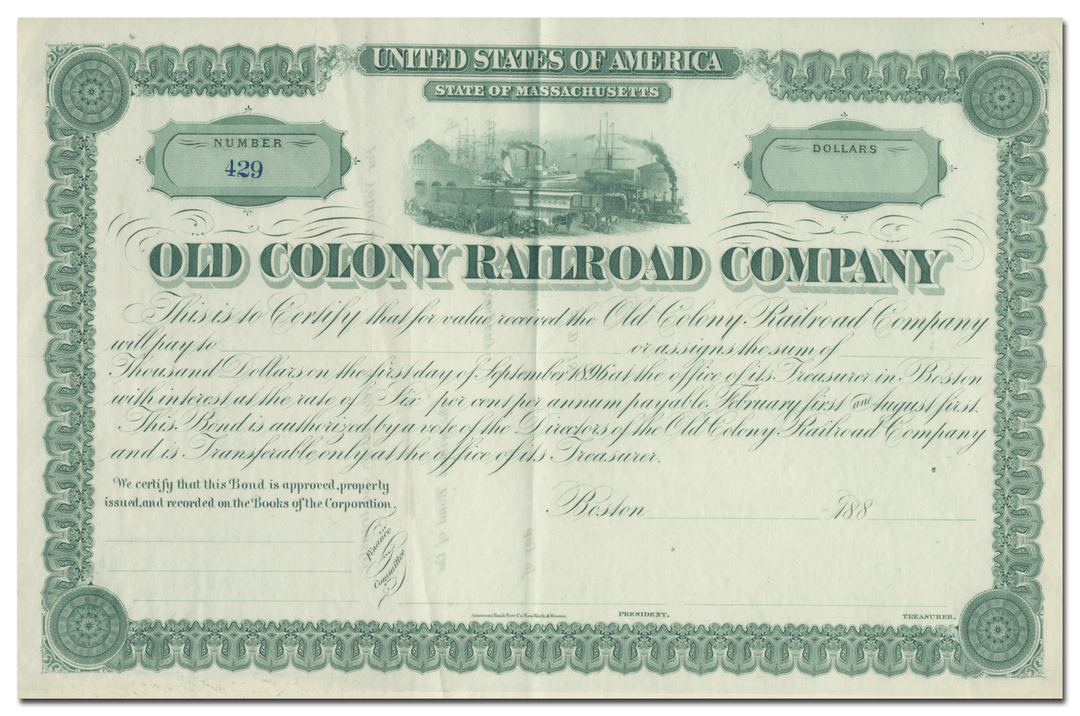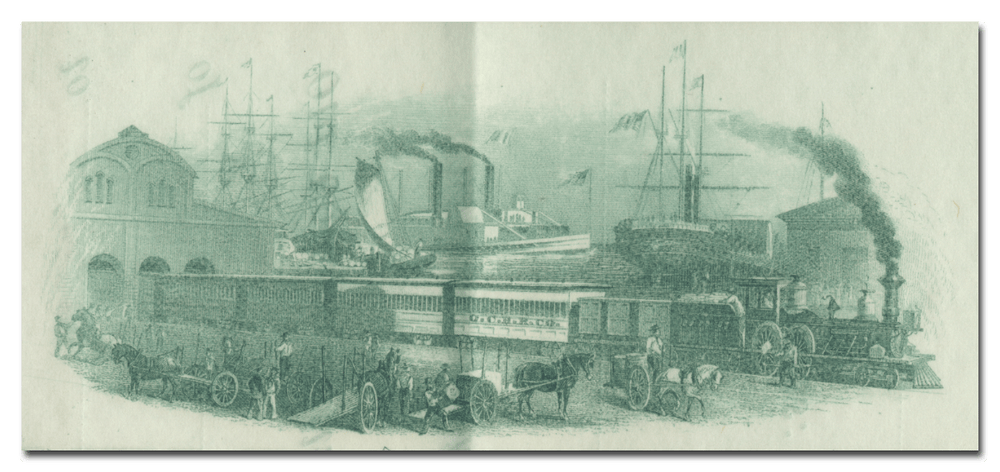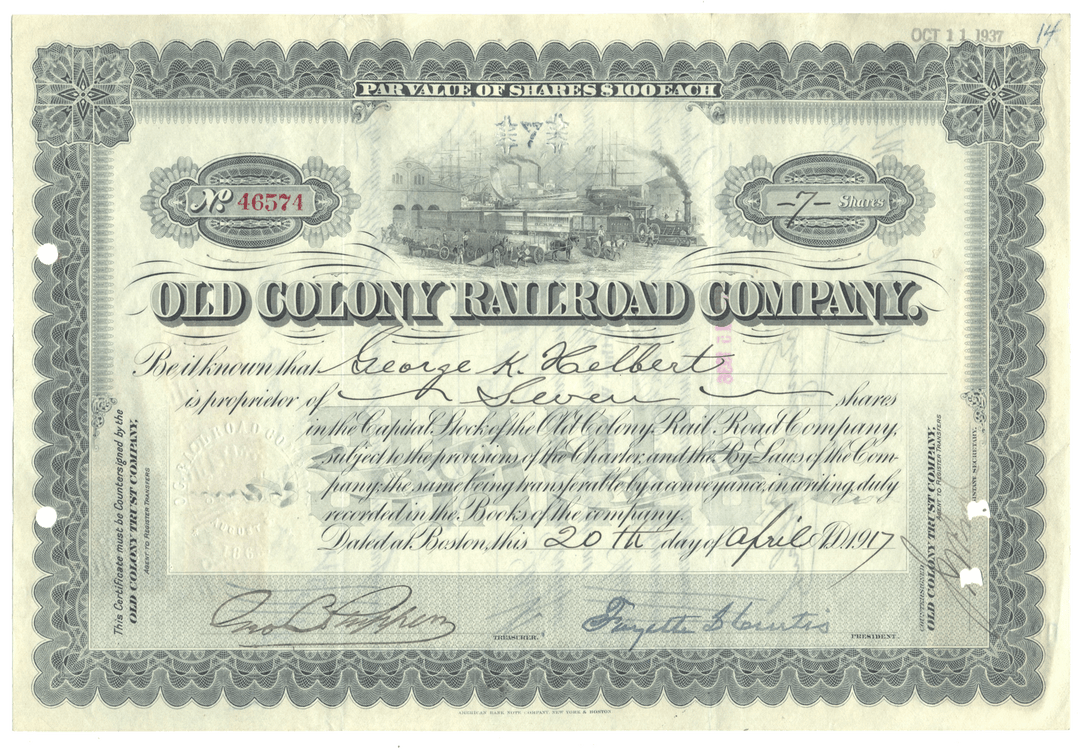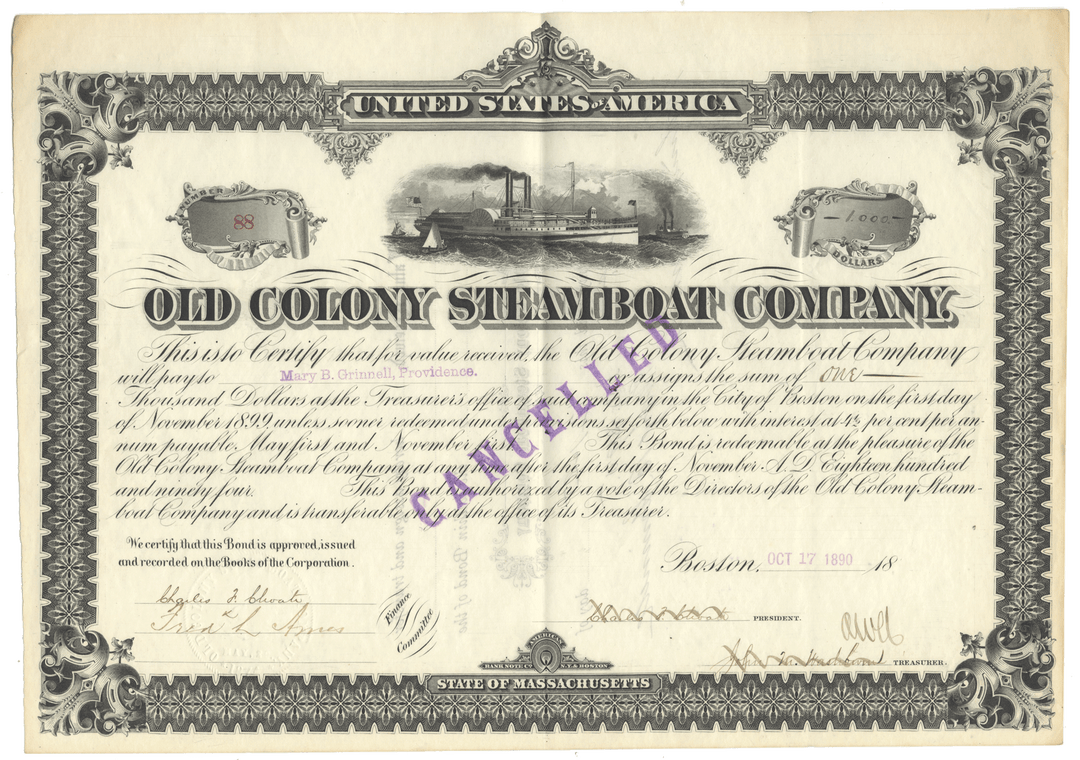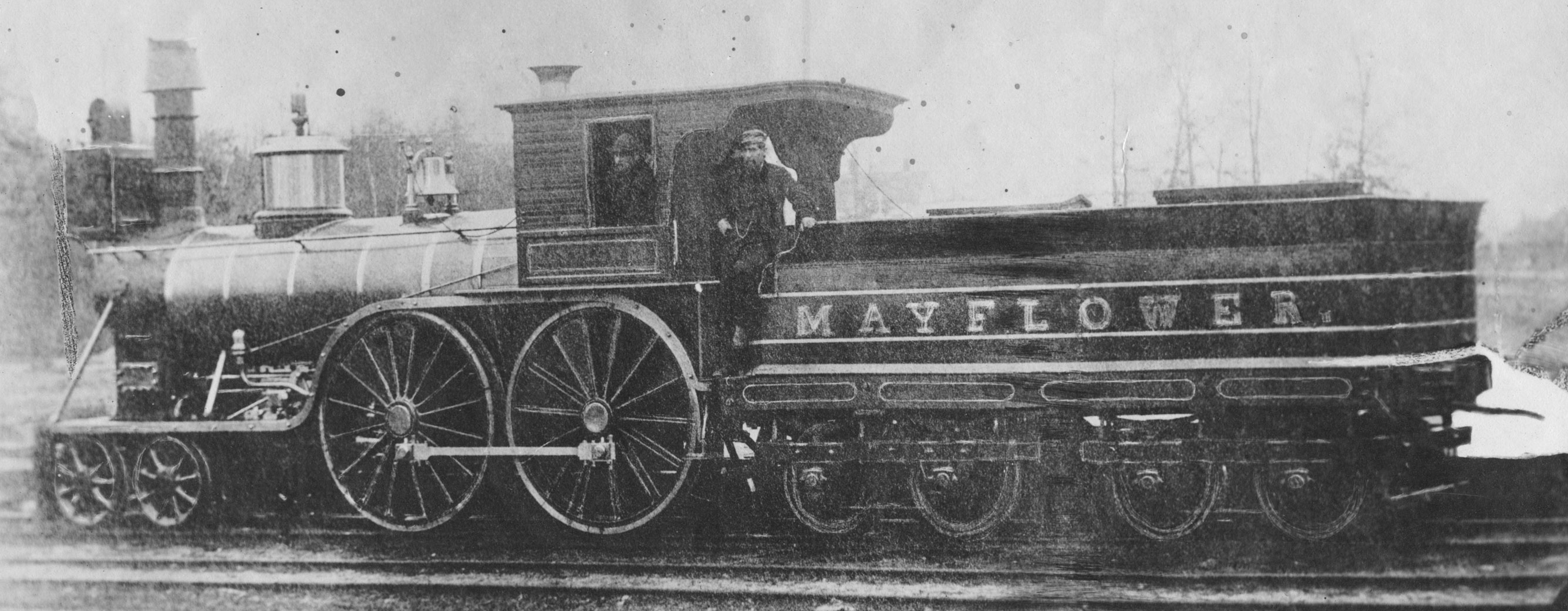
Old Colony Railroad
By the middle of the 19th century, the city of Boston had six major rail lines connecting it with other places including Lowell, Maine, Fitchburg, and Salem to the north, Worcester to the west and Providence, Rhode Island to the southwest. The southeastern part of Massachusetts had yet to be served by a rail link to Boston.
On March 16, 1844 the Old Colony Railroad Corporation was formed to provide a rail connection between Boston and Plymouth, Massachusetts. Construction of the line began in South Boston in June 1844 and the 36.8-mile line opened to Plymouth on November 10, 1845. The extension from South Boston to the newly completed Kneeland Street in Boston opened on June 19, 1847. Kneeland Street Station also served as the headquarters for the OC until the 1893 consolidation.
There had previously been an Old Colony Railroad formed in 1838 for a line between Taunton and New Bedford, but the name was changed to the New Bedford and Taunton Railroad in 1839 before service began the following year. This line would later become part of OC in 1879.
John Sever of Kingston, Massachusetts served as the first president of the Old Colony Railroad Corporation from 1844-1845. Nathan Carruth served as the second president of the corporation from 1845 to 1848. Carruth was a successful businessman and enthusiastic supporter of the expansion of railroads in Massachusetts and elsewhere in New England. With the opening of the Old Colony line through Dorchester in 1845, Carruth became actively involved in the development of the area. He built an estate on the east side of Dorchester Avenue called Beechmont/Beaumont which would become one of the first railroad suburbs in America.
All OC locomotives were named until 1884, when they were just simply numbered. Among the early engines were the Mayflower, Governor Carver, Governor Bradford and Miles Standish. The new railroad company also built the Samoset Hotel near the end of its line in Plymouth.
In 1847, the OC completed a short 6.2-mile connector line from its main line at Whitman to the Fall River Railroad line at Bridgewater Junction. On April 1, 1849, OC signed a lease of the South Shore Railroad for a period of five years. By 1851, traffic on the line had increased enough to warrant the opening of a second track running between Boston and South Braintree.
Old Colony and Fall River Railroad (1854–1863)
The OC and Fall River Railroad merged with a joint stock vote on June 20, 1854, forming the Old Colony and Fall River Railroad Company, which provided a two-pronged line from Boston to Plymouth and Boston to Fall River, splitting at South Braintree. Alexander Holmes from Kingston served as company president during this period, from 1854 to 1866.
The Fall River Railroad had been formed on August 8, 1845 with consolidation of three companies; the Fall River Branch Railroad, the Randolph and Bridgewater Railroad and the Middleborough Railroad. The Fall River Railroad was led by Richard Borden, a prominent mill owner in Fall River who wanted a direct route from his city to Boston, which did not require use of the Boston and Providence Railroad lines. The line from South Braintree to Myricks in the town of Berkley opened on December 16, 1846 as an extension of the Fall River Branch Railroad which had been completed in 1845.
On May 19, 1847, the first "boat train" left the OC's Kneeland Street Station in Boston bound for Fall River where passengers would board a steamship for New York City. Over the years, the Old Colony Steamboat Express train would become the most famous line of the Old Colony Railroad, with the finest and most up-to-date engines, cars and attention to detail.
In 1863 the Old Colony and Fall River Railroad acquired the Dorchester and Milton Branch Railroad Company, which it had been leasing since 1848.
Old Colony and Newport Railroad (1863–1872)
The Old Colony and Newport Railway was formed in July 1863 when the Old Colony and Fall River Railroad merged with the Newport and Fall River Railroad, which had been incorporated in 1846 to build a road from Newport, Rhode Island to the Massachusetts state line at Fall River. However, the road from Fall River to the Rhode Island state line was not authorized by the Commonwealth of Massachusetts for 15 years. The newly formed and renamed Old Colony and Newport Railway Company completed the final section of the line from Fall River to Newport which finally opened for service on February 5, 1864.
In 1865, the Old Colony and Newport Railway Company acquired the Dighton and Somerset Railroad, and completed a new, more direct route between Fall River and Boston via South Braintree on September 24, 1866. Part of the new route was over the Easton Branch Railroad between Stoughton and North Easton. In 1871 the Old Colony purchased the Easton Branch.
A portion of the old Granite Railway line was acquired, and later extended to form a loop through West Quincy off the original Plymouth line. In 1872, the Old Colony & Newport Railway Corporation built the Shawmut Railroad as a connection between the Dorchester and Milton Branch and the main line to Boston.
Old Colony Railroad (1872–1893)The Old Colony and Newport Railroad merged with the Cape Cod Railroad on May 1, 1872, and the two companies were consolidated on October 1, forming a new Old Colony Railroad Company under the leadership of Onslow Stearns, who served as president of the company from 1866 to 1877.
The 1872 merger formed a system with three main branches; Boston to Plymouth, South Braintree to Fall River, extending to Newport, Rhode Island and a third splitting from the Newport branch at Middleborough to Hyannis. At this point, the newly acquired lines became known as the Cape Cod Division, with a new superintendent's office located at Hyannis.
The Cape Cod Railroad Company had been established in 1846 as the Cape Cod Branch Railroad with a line off the Fall River Railroad from Middleborough to Sandwich opening in 1848. Among the proponents of the Cape Cod Branch Railroad were Richard Borden of Fall River, who saw the new line as an opportunity to bring more traffic and business through his hometown. In 1853, the extension of the line to Hyannis was started, reaching West Barnstable on December 22, 1853. On February 22, 1854, the Cape Cod Branch Railroad was renamed the Cape Cod Railroad Company.
In the spring of 1854, construction continued, with the railroad reaching Barnstable village May 8, Yarmouth Port May 19, and finally Hyannis on July 8, 1854. Connecting steamboat service to Nantucket commenced from Hyannis in late September and would continue until 1872, when the railroad branch to Woods Hole was opened.
The Cape Cod Central Railroad was incorporated 1861 as a branch from the Cape Cod Railroad, running from Yarmouth east and northeast to Orleans, and opening in 1865. The Cape Cod Central was purchased by the Cape Cod Railroad April 21, 1868, and the two railroads were consolidated on July 28, 1868.
The newly formed Old Colony Railroad extended the line to Provincetown, at the tip of Cape Cod, opening July 23, 1873.
In 1874, Old Colony founded the Martha's Vineyard Railroad, built across nine miles of sand on the island of Martha's Vineyard, running from the Oak Bluffs steamer wharf to Mattakeeset Lodge in Katama, Edgartown. The locomotive Active (later renamed the South Beach) was the sole operating train. This branch existed until 1896.
The Old Colony Railroad acquired the Middleborough and Taunton Railroad in 1874 and the South Shore Railroad in 1877, which it had once leased until 1854. A year later in 1878 it acquired the Duxbury and Cohasset Railroad which gave the Old Colony a connection with its original 1845 main line at Kingston. Beginning in 1874, the Old Colony operated the "South Shore, Duxbury and Cohasset and Plymouth Express" between Boston and Plymouth on this line.
In 1875, the Old Colony Railroad began operating the Fall River, Warren and Providence Railroad, which had been formed in 1863 as a merger between the Warren and Fall River and Fall River and Warren Railroad Companies. The Old Colony would later acquire this line outright in 1892.
In 1879, the Old Colony Railroad greatly expanded its network into Central Massachusetts by leasing the Boston, Clinton, Fitchburg and New Bedford Railroad for 999 years, then purchasing it outright in 1883. The acquisition of this line provided important connections for the Old Colony, such as with the Boston and Providence Railroad at Mansfield, the Boston and Albany Railroad at South Framingham and the Fitchburg Railroad at Fitchburg, among others. This deal also gave the Old Colony Railroad direct access to the important industrial port of New Bedford. Upon this acquisition, the lines of the former Boston, Clinton and Fitchburg Railroad became known as the Old Colony's "Northern Division", with headquarters in Fitchburg, while the older OCRR lines became known as the "Central Division" with headquarters in Boston.
In 1886 the Old Colony Railroad acquired the Lowell and Framingham Railroad, which had previously been known as the Framingham and Lowell Railroad before 1871.
In 1887 the Old Colony Railroad acquired the Hanover Branch Railroad. On April 1, 1888, the Old Colony Railroad signed a 99-year lease agreement the Nantasket Beach Railroad with service to Hull, Massachusetts.
Several days later, on April 7, 1888 the OCRR signed a 99-year lease on the Boston and Providence Railroad, one of New England's earliest railroads, which had been chartered in Massachusetts in 1831 and began service between Providence and Boston in 1835. This major agreement gave the Old Colony Railroad operating rights on the busy double-tracked main line between the two capital cities, along with other branches to Dedham and Stoughton. The deal also included use of the Boston and Providence Railroad's Park Square Station in Boston.
In 1891 the OCRR signed a 99 years lease of the Providence, Warren and Bristol Railroad. In December 1892, the OCRR signed a 99-year lease of the Plymouth and Middleborough Railroad properties.
In 1896 the OCRR acquired the Fall River Railroad (1874) line between Fall River and New Bedford, which it had been leasing since 1882.
New York, New Haven and Hartford Railroad control (1893–1969)On March 1, 1893 the New York, New Haven and Hartford Railroad (NYNH&H) leased the entire Old Colony system for 99 years, which by then included the leased Boston and Providence Railroad and everything substantially east of it, as well as long branches northwest to Fitchburg and Lowell. Along with the lease of the New England Railroad in 1898, the 1893 lease arrangement gave the New York, New Haven and Hartford Railroad a virtual monopoly on rail transport in southern New England.
With the opening of South Station in 1899, Kneeland Street Station taken over by the Boston and Albany Railroad as a local freight office. It was demolished in 1918 after being deemed unsafe.
Despite high ridership, this line had been a source of problems for the New Haven Railroad, which leased the system. In 1935, the bankrupt New Haven attempted to default on its lease and return ownership of the line to the Old Colony stockholders, however, this drove the Old Colony, which had not run trains in over thirty years, to bankruptcy in one day and the New Haven was forced to run the trains by court order, with a provision that if losses exceeded a certain amount they could abandon the line. The Old Colony Division enjoyed a brief renaissance during the middle of the century under the pro-commuter term of President Frederick C. Dumaine, Jr., however this was not to last.
The New Haven's accountants used somewhat dubious practices to shift a greater amount of debt to the Old Colony Division, and the railroad announced that all passenger service would end in 1958. An emergency subsidy was approved by the Commonwealth of Massachusetts for another year, and service finally ended in 1959 with the opening of the Southeast Expressway, which along with Route 24 runs alongside or parallel to the former Old Colony right-of-ways in many sections.
The New York, New Haven and Hartford Railroad merged into Penn Central in 1969, which was in turn merged into Conrail in 1976.








